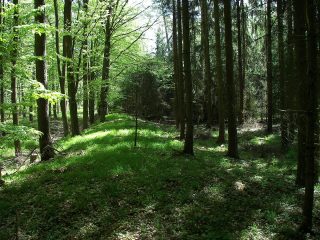
In 1934 the fort was partly excavated and the walls, apart from the missing north-east wall, were uncovered. The 3rd-century garrison was the Cohors II Tungrorum, part-mounted. The 2nd-century garrison was the First Cohort of Batavians, followed by Cohors IV Gallorum equitata. It appears that the Wall had already been built at the most convenient point to cross the Cambeck and so, when the fort was built, the strongest point was chosen rather than one adjacent to the Wall. It is the only fort on Hadrian's Wall in this position. The fort lies within the Vallum, but is not adjacent to the Wall. The Roman name for Birdoswald is now thought to be Banna.

At one time Camboglanna was the accepted name for Birdoswald, but this is now believed to be an error in the Notitia Dignitatum. There was some confusion over the Roman name for the fort. The name "Camboglanna" is believed to mean "Crook Bank", or "Bent Valley" because it overlooks a bend in the river Irthing the name is Brythonic, made of cambo- "curved, bent, crooked" and glanna "steep bank, stream/river side, valley with a stream". The site was drastically levelled in 1791 when the gardens of Castlesteads House were laid over it. It guarded an important approach to the Wall and also watched the east bank of the Cambeck against raiders from the Bewcastle area.

It was almost 7 miles (11 km) west of Birdoswald, on a high bluff commanding the Cambeck Valley. It was the twelfth fort on Hadrian's Wall counting from the east, between Banna ( Birdoswald) to the east and Uxelodunum ( Stanwix) to the west.


 0 kommentar(er)
0 kommentar(er)
